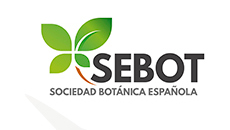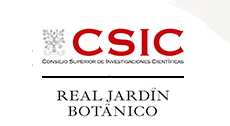Scientific Area
Abstract Detail
Nº613/1255 - VANILLOMICS: TOWARDS A PHYLOGENOMIC MONOGRAPH OF NEOTROPICAL VANILLAS
Format: ORAL
Authors
Alexander Damian-Parizaca1,2, Adam Karremans3, Oscar Perez-Escobar4, Gerardo Salazar5, Eric Hagsater6, Andres Barona7, Mathias Engels8, Marcelo Rodrigues9, John Janovec10, Segundo Oliva11, Nicole Mitidieri1, Luis Baquero12, Gabriel Iturralde12, Wilfrido de la Cruz13, Alvaro Perez14, Marco Jimnez12, Miguel Lozano17, Rebeca Menchaca17, Ivan Tamayo-Cen18, German Carnevali18, Henry Garzn15, Leisberth Vlez16, Yader Ruiz19, Kenneth Cameron1
Affiliations
1. Department of Botany, University of Wisconsin-Madison, Wisconsin, USA
2. Inka Terra Asociación, Madre de Dios, Perú
3. Jardín Botánico Lankester, Universidad de Costa Rica, Costa Rica
4. Royal Botanic Gardens, Kew, Richmond, UK
5. Instituto de Biología, Universidad Nacional Autónoma de México, Mexico.
6. Herbario AMO, Miguel Hidalgo, Mexico
7. Instituto Amazónico de Investigaciones Científicas Sinchi, Colombia
8. Universidade Federal do Paraná, Brazil
9. Rua José Lopes de Andrade 415, Caraguatatuba São Paulo, Brazil.
10. Sam Houston State University Natural History Museum, TX, USA
11. Universidad Nacional Toribio Rodriguez de Mendoza de Amazonas, Amazonas, Perú
12. Universidad de Las Américas, Quito, Ecuador
13. Fundación Pachamama, Puyo, Ecuador
14. Pontificia Universidad Católica del Ecuador, Quito, Ecuador
15. Herbario HA, Universidad del Azuay, Cuenca, Ecuador
16. Herbario HUTPL, Universidad Técnica Particular de Loja, Loja, Ecuador
17. Tropical Research Center-Universidad Veracruzana, Mexico
18. Centro de Investigación Científica de Yucatán, Merida, Mexico
19. Universidad de El Salvador, San Salvador, El Salvador
Abstract
The biodiversity of the Neotropics presents an excellent opportunity to study different evolutionary phenomena. Early divergent lineages, such as the genus Vanilla, show promise as a system to test these processes. Despite their unique characteristics, including a wide floral diversity and specialization in complex ecological interactions, many aspects of the evolution, taxonomy, and ecology of the genus remain poorly studied. This project aims to generate a comprehensive and detailed phylogeny of Neotropical vanillas through an unprecedented international collaborative effort that includes extensive taxonomic sampling and the use of high-throughput sequencing techniques, specifically the Angiosperm353 probe set. We will use the species tree generated as a framework to examine the evolutionary relationships of the group, the diversification rate of major clades, their biogeography, and the evolution of certain characters. At the same time, we will propose a modern monograph of the group by integrating the molecular data we generate with field studies and an extensive review of herbarium collections. Among the preliminary results are: a tissue bank of over 400 samples, covering ~85% of the total Neotropical species, with 70% resulting from the authors fieldwork; and a matrix of over 2500 specimens (including herbarium samples and flowers in alcohol) from 43 examined herbaria. This project demonstrates how regional collaborative work and the exchange of capabilities at different levels can contribute to the study of our Neotropical flora, the most diverse on the planet.




